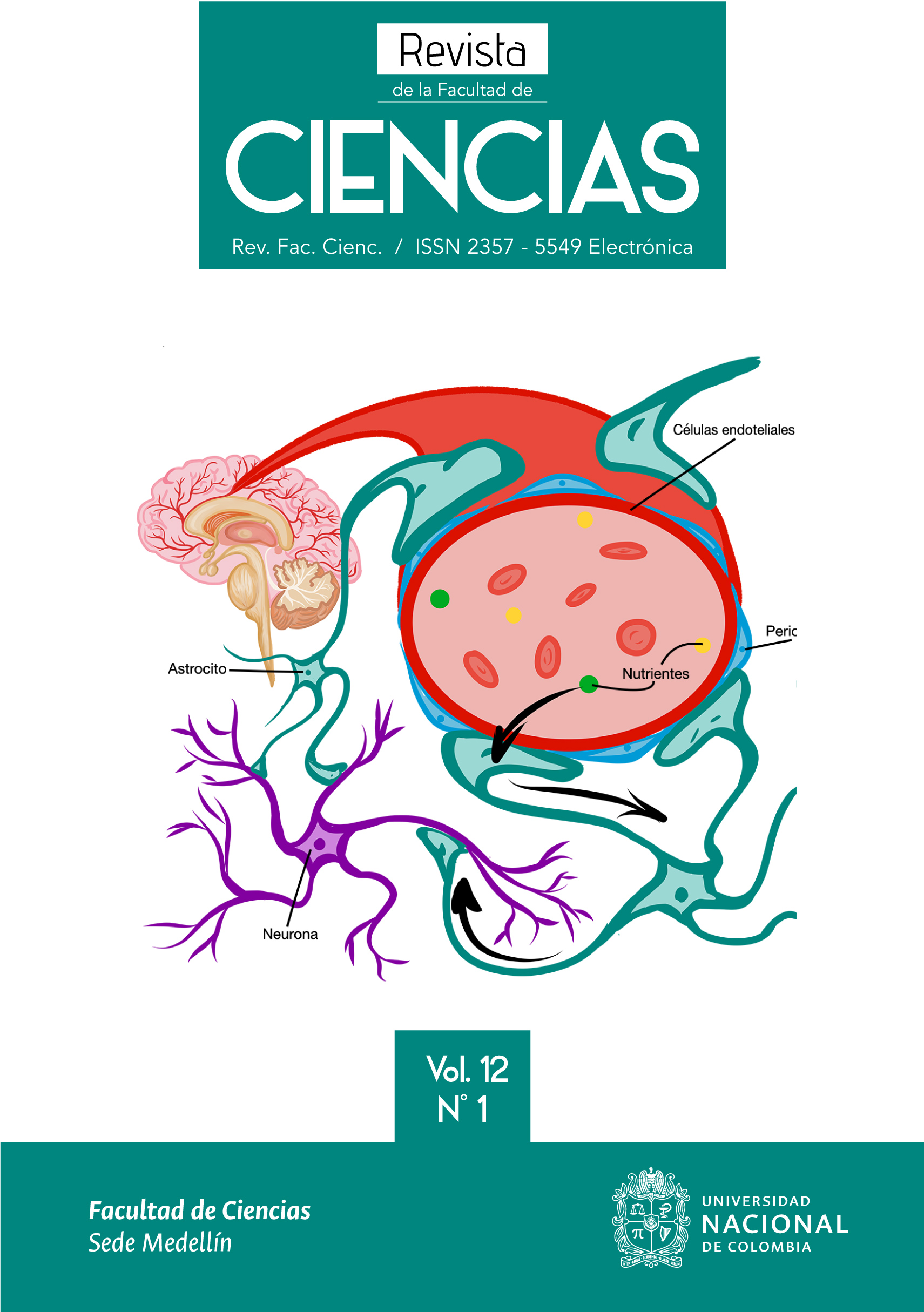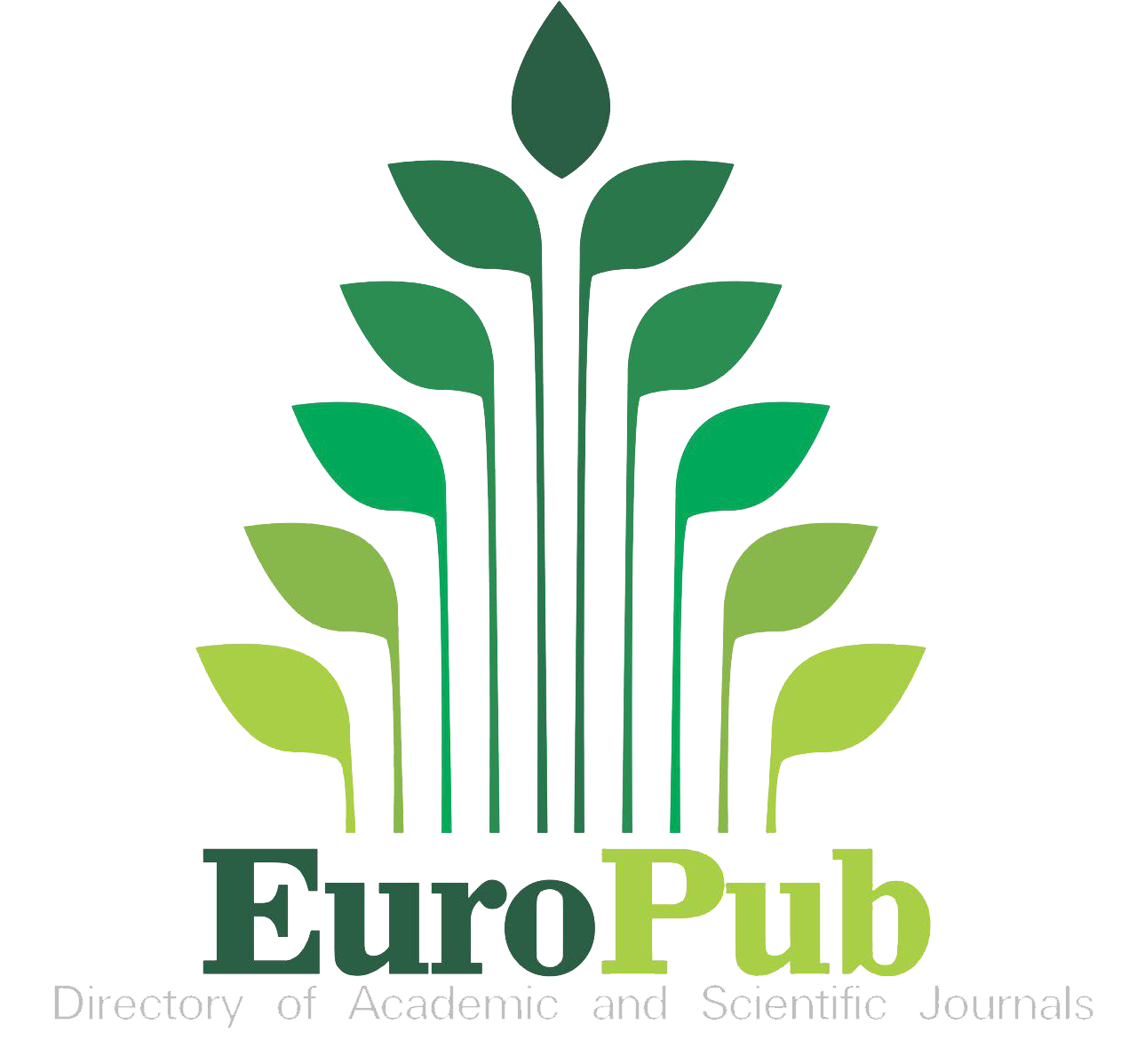CARACTERIZACIÓN DE LA MICROBIOTA DE LA LECHE MATERNA DE DONANTES Y LAS HECES DE SUS LACTANTES RESIDENTES EN ANTIOQUIA, COLOMBIA
CHARACTERIZATION OF THE MICROBIOTA OF DONOR BREAST MILK AND THE FECES OF THEIR INFANTS RESIDING IN ANTIOQUIA, COLOMBIA
DOI:
https://doi.org/10.15446/rev.fac.cienc.v12n1.99209Palabras clave:
Leche materna, banco de leche humana, propiedades probióticas (es)breast milk, human milk bank, probiotic properties (en)
Descargas
La leche materna humana es un alimento integral para los infantes en los primeros meses de vida y por diferentes factores como la morbimortalidad de la madre, que afecta la lactancia, se recurre a los Bancos de Leche. Este fluído biológico contiene una microbiota con propiedades probióticas, que ayuda al metabolismo de los nutrientes y la maduración del sistema inmunológico principalmente, beneficios que se ven reflejados en la salud del humano hasta la adultez. Se planteó caracterizar la microbiota de la leche humana de donantes y las heces de sus lactantes, provenientes del Banco de leche del Hospital General de Medellín y de mujeres residentes en Antioquia, recolectando un total de 134 muestras. Por identificación morfológica bioquímica o análisis molecular, se encontraron microorganismos con propiedades probióticas principalmente, Lactiplantibacillus plantarum y Enterococcus faecium, y de alterantes, Staphylococcus aureus, Escherichia coli y las levaduras. Se comprobó que la leche materna contiene una microbiota nativa que incluye microorganismos comensales y otros con propiedades probióticas, que la presencia de estos últimos se disminuye después de la pasteurización y es necesario implementar pruebas adicionales para la identificación de Bacterias Ácido Lácticas y evitar un descarte innecesario de la leche.
Human breast milk is an integral food for infants in the first months of life and due to different factors, such as maternal morbimortality, which affects lactation, Milk Banks are resorted to. This biological fluid contains a microbiota with probiotic properties, which helps the metabolism of nutrients and mainly the maturation of the immune system, benefits that are reflected in human health until adulthood. The objective was to characterize the microbiota of human milk from donors and the feces of their infants, from the milk bank of the General Hospital of Medellin and from women residing in Antioquia, collecting a total of 134 samples. By morphology, biochemical identification or molecular analysis, microorganisms with probiotic properties were found, mainly Lactiplantibacillus plantarum and Enterococcus faecium, and alterants like, Staphylococcus aureus, Escherichia coli and yeasts. It was found that breast milk contains an native microbiota that includes commensal microorganisms and others with probiotic properties, that the presence of the latter decreases after pasteurization and that it is necessary to implement additional tests for the identification of Lactic Acid Bacteria to avoid unnecessary discarding of milk.
Referencias
Al-Said, A. A., Salama, H. F. & El-Asuoty, M. S. (2022). Evaluation of the Potential Risks of Raw Milk Collected from Different Sources in El-Behaira Governorate. Alexandria Journal for Veterinary Sciences, 72(1). DOI: https://doi.org/10.5455/ajvs.135670
Anjum, J., Zaidi, A., Barrett, K. & Tariq, M. (2022). A potentially probiotic strain of Enterococcus faecalis from human milk that is avirulent, antibiotic sensitive, and nonbreaching of the gut barrier. Archives of Microbiology 2022 204:2, 204(2), 1–18. https://doi.org/10.1007/S00203-022-02754-8 DOI: https://doi.org/10.1007/s00203-022-02754-8
Barreras, A., Tamayo, A. R., Villar, V. M. Del & Valdez, J. Á. O. (2012). Evaluation of the antimicrobial susceptibility of Staphylococcus aureus to the K9CATH peptide by the resazurin microtiter method and the reference broth microdilution method. Scientific Journal of Veterinary Advances, 1, 137–141.
Bhisikar, S., Mondkar, J., Manerkar, S., Goel, S., D’Dsouza, D., & Baveja, S. (2018). Improving quality of banked milk: Utility of Dornic acid test. The Indian Journal of Pediatrics, 85(4), 272-275. DOI: https://doi.org/10.1007/s12098-017-2518-7
Brandtzaeg, P. (2010). The mucosal immune system and its integration with the mammary glands. The Journal of pediatrics, 156(2), S8-S15. DOI: https://doi.org/10.1016/j.jpeds.2009.11.014
Casarotti, S. N., Carneiro, B. M., Svetosla, Todorov, D., Nero, L. A., Rahal, P., Lúcia, A., Penna, B., Todorov, S. D., Nero, L. A., Rahal, P. & Penna, A. L. B. (2017). In vitro assessment of safety and probiotic potential characteristics of Lactobacillus strains isolated from water buffalo mozzarella cheese. Annals of Microbiology, 67(4), 289–301. https://doi.org/10.1007/s13213-017-1258-2 DOI: https://doi.org/10.1007/s13213-017-1258-2
Corbel, M. (2012). Yersinia, pasteurella and francisella. In D. Greenwood, R. Slack, M. Barer & W. Irving, Medical Microbiology (18th ed., pp. 350-358). Churchill Livingstone Elsevier. DOI: https://doi.org/10.1016/B978-0-7020-4089-4.00050-0
De la Academia, C. D. P. ABM Protocolo Clínico# 8: Almacenamiento de Leche Humana. Información para el Uso Casero en Bebés a Término (Protocolo Original Marzo 2004; Revisión# 1 Marzo 2010).
De la Torre, M. J. L. Lactancia materna. Asociación Española de Pediatría. [trabajo de investigación]. [10 Oct. 2014] Documento PDF disponible en: https://www. aeped. es/sites/default/files/documentos/lm. pdf.
Dewitte, C., Courdent, P., Charlet, C., Dumoulin, D., Courcol, R., & Pierrat, V. (2015). Contamination of human milk with aerobic flora: Evaluation of losses for a human milk bank. Archives de Pediatrie, 22(5), 461–467. https://doi.org/10.1016/j.arcped.2015.02.011 DOI: https://doi.org/10.1016/j.arcped.2015.02.011
Emser, K., Barbosa, J., Teixeira, P., & de Morais, A. M. M. B. (2017). Lactobacillus plantarum survival during the osmotic dehydration and storage of probiotic cut apple. Journal of Functional Foods, 38, 519-528. DOI: https://doi.org/10.1016/j.jff.2017.09.021
FAO/WHO. (2002). Guidelines for the evaluation of probiotics in food. In joint FAO/WHO working group report.
Fathia, B., Annick, L., Robin, D., Thami, E., Abderrahmane, B., & Philippe, T. (2014). Characterization of Lactobacillus strains isolated from Algerian children faeces for their probiotic properties. African Journal Of Microbiology Research, 8(3), 297-303. doi: 10.5897/ajmr2013.6404 DOI: https://doi.org/10.5897/AJMR2013.6404
Fernández, L., Langa, S., Martín, V., Maldonado, A., Jiménez, E., Martín, R., & Rodríguez, J. M. (2013). The human milk microbiota: origin and potential roles in health and disease. Pharmacological Research, 69(1), 1-10. DOI: https://doi.org/10.1016/j.phrs.2012.09.001
Guimaraes, V., Guerra de Almedia, J. A. & Reies, F. (2004). Normas técnicas para bancos de leche humana, Red Nacional de bancos de leche humana, Brasil. Centro de Referencia Nacional para Bancos de Leche humana – Instituto Fernandes Figueira / Fundación Oswaldo Cruz / Ministerio de Salud.
Instituto Colombiano Agropecuario (ICA). (2016). Decreto 616 de 2006, Ministerio de Protección social. https://www.ica.gov.co/etattachment15425e0f-81fb-4111b215-63e61e9e9130/2006d616.aspx
Instituto Colombiano de Normas Técnicas y Certificación. (2009). Microbiología de los alimentos para consumo humano y animal. Método horizontal para el recuento de microorganismos. NTC 4519. https://books.google.com.co/books?id=ndVmtAEACAAJ& dq=NTC+4519& hl=es-419& sa=X& redir_esc=y
Jiménez, E., Fernández, L., Maldonado, A., Martín, R., Olivares, M., Xaus, J. & Rodríguez, J. M. (2008). Oral administration of Lactobacillus strains isolated from breast milk as an alternative for the treatment of infectious mastitis during lactation. Applied and Environmental Microbiology, 74(15), 4650–4655. https://doi.org/10.1128/AEM.02599-07 DOI: https://doi.org/10.1128/AEM.02599-07
Léké, A., Grognet, S., Deforceville, M., Goudjil, S., Chazal, C., Kongolo, G., ... & Biendo, M. (2019). Macronutrient composition in human milk from mothers of preterm and term neonates is highly variable during the lactation period. Clinical Nutrition Experimental, 26, 59-72. DOI: https://doi.org/10.1016/j.yclnex.2019.03.004
Luz, C., Calpe, J., Manuel Quiles, J., Torrijos, R., Vento, M., Gormaz, M., Mañes, J. & Meca, G. (2021). Probiotic characterization of Lactobacillus strains isolated from breast milk and employment for the elaboration of a fermented milk product. Journal of Functional Foods, 84, 104599. https://doi.org/10.1016/J.JFF.2021.104599 DOI: https://doi.org/10.1016/j.jff.2021.104599
Moreno, M.A.S., Castro, L.S., Abrao, A.C.F.V. & Coca, K. P.(2018). Food safety and quality of distribution of raw human milk from a University Hospital. Rev Nutr. 31(6), 547--556. http://dx.doi.org/10.159 /1678-98652018000600004 DOI: https://doi.org/10.1590/1678-98652018000600004
Moreno, R., Salas, E. J., Pérez-Maldonado, C. I. & Jiménez, J. M. (2011). Evaluación del potencial probiótico de lactobacilos aislados de heces de lactantes y leche materna. education, 27, 428-437.
Murphy, K., Curley, D., O’callaghan, T. F., O’shea, C. A., Dempsey, E. M., O’toole, P. W., Ross, R. P., Ryan, C. A. & Stanton, C. (2017). The composition of human milk and infant faecal microbiota over the first three months of life: A pilot study. Scientific Reports, 7. https://doi.org/10.1038/SREP40597 DOI: https://doi.org/10.1038/srep40597
Muñoz-Quezada, S., Chenoll, E., María Vieites, J., Genovés, S., Maldonado, J., Bermúdez-Brito, M., Gomez-Llorente, C., Matencio, E., José Bernal, M., Romero, F., Suárez, A., Ramón, D. & Gil, A. (2013). Isolation, identification and characterisation of three novel probiotic strains (Lactobacillus paracasei CNCM I-4034, Bifidobacterium breve CNCM I-4035 and Lactobacillus rhamnosus CNCM I-4036) from the faeces of exclusively breast-fed infants. British Journal of Nutrition, 109(S2), pp.S51-S62. DOI: https://doi.org/10.1017/S0007114512005211
Oliveira, C., Lopes-Júnior, L. C., & Sousa, C. P. de. (2022). Microbiological quality of pasteurized human milk from a Milk Bank of São Paulo. Acta Paul Enferm, 35, 1–10.
Osorio, L. M., & Umbarila, A. S. (2015). Microbiota de la glándula mamaria. Pediatría, 48(1), 1-8. DOI: https://doi.org/10.1016/j.rcpe.2015.07.001
Pannaraj, P., Li, F., Cerini, C., Bender, J., Yang, S., & Rollie, A. et al. (2017). Association Between Breast Milk Bacterial Communities and Establishment and Development of the Infant Gut Microbiome. JAMA Pediatrics, 171(7), 647. doi: 10.1001/jamapediatrics.2017.0378 DOI: https://doi.org/10.1001/jamapediatrics.2017.0378
Patel, R. M., & Underwood, M. A. (2018, February). Probiotics and necrotizing enterocolitis. In Seminars in pediatric surgery (Vol. 27, No. 1, pp. 39-46). WB Saunders. DOI: https://doi.org/10.1053/j.sempedsurg.2017.11.008
Peixoto, L. C., Nunes, M. G. S., Silva, M. J. da, & Lira, G. R. de. (2021). Acidez e perfil calórico do leite humano pasteurizado em um banco de leite de Pernambuco. Revista Enfermagem Digital Cuidado e Promoção Da Saúde, 6, 1–6. https://doi.org/10.5935/2446-5682.20210071 DOI: https://doi.org/10.5935/2446-5682.20210071
Prabhurajeshwar, C., & Chandrakanth, R. K. (2017). Probiotic potential of Lactobacilli with antagonistic activity against pathogenic strains: An in vitro validation for the production of inhibitory substances. Biomedical journal, 40(5), 270-283. DOI: https://doi.org/10.1016/j.bj.2017.06.008
Rajoka, M. S. R., Mehwish, H. M., Siddiq, M., Haobin, Z., Zhu, J., Yan, L., ... & Shi, J. (2017). Identification, characterization, and probiotic potential of Lactobacillus rhamnosus isolated from human milk. LWT, 84, 271-280. DOI: https://doi.org/10.1016/j.lwt.2017.05.055
Romyasamit, C., Thatrimontrichai, A., Aroonkesorn, A., Chanket, W., Ingviya, N., Saengsuwan, P., & Singkhamanan, K. (2020). Enterococcus faecalis Isolated From Infant Feces Inhibits Toxigenic Clostridioides (Clostridium) difficile. Frontiers in Pediatrics, 8, 612. https://doi.org/10.3389/FPED.2020.572633/BIBTEX DOI: https://doi.org/10.3389/fped.2020.572633
Serrano Niño, J., Solís Pacheco, J., Gutierrez Padilla, J., Cobián García, A., Cavazos Garduño, A., González Reynoso, O. and Aguilar Uscanga, B. (2016). Isolation and Identification of Lactic Acid Bacteria from Human Milk with Potential Probiotic Role. Journal of Food and Nutrition Research, 4(3), pp.170-177.
Smith, A. C., & Hussey, M. A. (2019). Gram Stain Protocols. https://asm.org/Protocols/Gram-Stain-Protocols
Talebi Bezmin Abadi, A. (2017). Probiotics as Anti-Helicobacter pylori Agent: State of the Art. Anti-Infective Agents, 15(1), 63–68. https://doi.org/10.2174/2211352515666170216142116 DOI: https://doi.org/10.2174/2211352515666170216142116
Tankeshwar, A. (2013). Catalase test: Principle, Procedure, Results and Applications. Learn Microbiology Online. https://microbeonline.com/catalase-test-principle-uses-procedure-results/
Tankeshwar, A. (2022). Oxidase Test: Principle, Procedure, Results . Microbe Online. https://microbeonline.com/oxidase-test-principle-procedure-and-oxidase-positive-organisms/
Tarrah, A., da Silva Duarte, V., de Castilhos, J., Pakroo, S., Lemos Junior, W. J. F., Luchese, R. H., Fioravante Guerra, A., Rossi, R. C., Righetto Ziegler, D., Corich, V. & Giacomini, A. (2019). Probiotic potential and biofilm inhibitory activity of Lactobacillus casei group strains isolated from infant feces. Journal of Functional Foods, 54, 489–497. https://doi.org/10.1016/J.JFF.2019.02.004 DOI: https://doi.org/10.1016/j.jff.2019.02.004
Vázquez-Román, S., Garcia-Lara, N., Escuder-Vieco, D., Chaves-Sánchez, F., De la Cruz-Bertolo, J., & Pallas-Alonso, C. (2013). Determination of Dornic Acidity as a Method to Select Donor Milk in a Milk Bank. Breastfeeding Medicine, 8(1), 99-104. doi: 10.1089/bfm.2011.0091 DOI: https://doi.org/10.1089/bfm.2011.0091
Vieira, A., Moreira, M., Rocha, A., Pimenta, H., & Lucena, S. (2004). Assessment of the energy content of human milk administered to very low birth weight infants. Jornal De Pediatria, 80(6), 490-494. http://dx.doi.org/10.2223/1263 DOI: https://doi.org/10.2223/JPED.1263
Vlková, E., Grmanová, M., Rada, V., Homutová, I., & Dubná, S. (2009). Selection of probiotic bifidobacteria for lambs. Czech Journal of Animal Science, 54(No. 12), 552–565. https://doi.org/10.17221/151/2009-CJAS DOI: https://doi.org/10.17221/151/2009-CJAS
Wiegand, I., Hilpert, K., & Hancock, R. E. W. (2008). Agar and broth dilution methods to determine the minimal inhibitory concentration (MIC) of antimicrobial substances. Nature Protocols, 3(2), 163–175. https://doi.org/10.1038/nprot.2007.521 DOI: https://doi.org/10.1038/nprot.2007.521
Zhang, X., Mushajiang, S., Luo, B., Tian, F., Ni, Y., & Yan, W. (2020). The Composition and Concordance of Lactobacillus Populations of Infant Gut and the Corresponding Breast-Milk and Maternal Gut. Frontiers in Microbiology, 11, 2985. https://doi.org/10.3389/FMICB.2020.597911/BIBTEX DOI: https://doi.org/10.3389/fmicb.2020.597911
Zhao, J., Fan, H., Kwok, L. Y., Guo, F., Ji, R., Ya, M., & Chen, Y. (2020). Analyses of physicochemical properties, bacterial microbiota, and lactic acid bacteria of fresh camel milk collected in Inner Mongolia. Journal of Dairy Science, 103(1), 106–116. https://doi.org/10.3168/JDS.2019-17023 DOI: https://doi.org/10.3168/jds.2019-17023
Cómo citar
APA
ACM
ACS
ABNT
Chicago
Harvard
IEEE
MLA
Turabian
Vancouver
Descargar cita
CrossRef Cited-by
1. Diana C. Londoño-Sierra, Victoria Mesa, Nathalia Correa Guzmán, Laura Bolívar Parra, Olga I. Montoya-Campuzano, Sandra L. Restrepo-Mesa. (2023). Maternal Diet May Modulate Breast Milk Microbiota—A Case Study in a Group of Colombian Women. Microorganisms, 11(7), p.1812. https://doi.org/10.3390/microorganisms11071812.
Dimensions
PlumX
Visitas a la página del resumen del artículo
Descargas
Licencia
Derechos de autor 2023 Revista de la Facultad de Ciencias

Esta obra está bajo una licencia internacional Creative Commons Atribución-NoComercial-SinDerivadas 4.0.
Los autores o titulares del derecho de autor de cada artículo confieren a la Revista de la Facultad de Ciencias de la Universidad Nacional de Colombia una autorización no exclusiva, limitada y gratuita sobre el artículo que una vez evaluado y aprobado se envía para su posterior publicación ajustándose a las siguientes características:
1. Se remite la versión corregida de acuerdo con las sugerencias de los evaluadores y se aclara que el artículo mencionado se trata de un documento inédito sobre el que se tienen los derechos que se autorizan y se asume total responsabilidad por el contenido de su obra ante la Revista de la Facultad de Ciencias, la Universidad Nacional de Colombia y ante terceros.
2. La autorización conferida a la revista estará vigente a partir de la fecha en que se incluye en el volumen y número respectivo de la Revista de la Facultad de Ciencias en el Sistema Open Journal Systems y en la página principal de la revista (https://revistas.unal.edu.co/index.php/rfc/index), así como en las diferentes bases e índices de datos en que se encuentra indexada la publicación.
3. Los autores autorizan a la Revista de la Facultad de Ciencias de la Universidad Nacional de Colombia para publicar el documento en el formato en que sea requerido (impreso, digital, electrónico o cualquier otro conocido o por conocer) y autorizan a la Revista de la Facultad de Ciencias para incluir la obra en los índices y buscadores que estimen necesarios para promover su difusión.
4. Los autores aceptan que la autorización se hace a título gratuito, por lo tanto renuncian a recibir emolumento alguno por la publicación, distribución, comunicación pública y cualquier otro uso que se haga en los términos de la presente autorización.
5. Todos los contenidos de la Revista de la Facultad de Ciencias, están publicados bajo la Licencia Creative Commons Atribución – No comercial – Sin Derivar 4.0.
MODELO DE CARTA DE PRESENTACIÓN y CESIÓN DE DERECHOS DE AUTOR






















